Chunk processing¶
A tomography scan produces a collection of X-ray images. These can be of two types:
Radios: raw intensity data acquired on the detector
Flats, darks: for flat-field normalization
A radiograph (or radio) is the raw data at the output of a X-ray detector.
Radios and sinograms¶
In this documentation, we distinguish between radios and sinograms.
As stated before, a radio is a raw projection data, i.e what comes out of the detector. “Corrected radios” refer to radios after some CCD corrections.
Each radio has Nx pixels horizontally, and Nz pixels vertically. During a scan, a collections of Na radios are acquired, where Na is the number of projection angles.
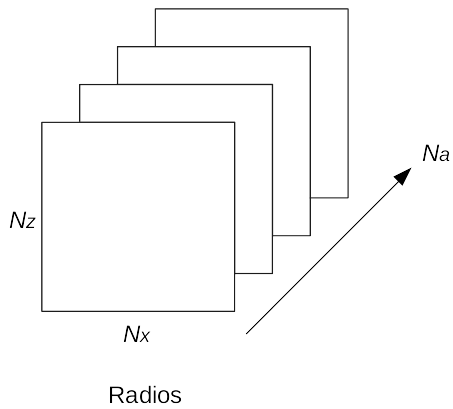
In short, there are Na radios of (Nx, Nz) pixels.
In parallel geometry with circular trajectory, the sinogram 0 is obtained by extracting the first line of each radio. The sinogram number z is obtained by extracting the line z of each radio.
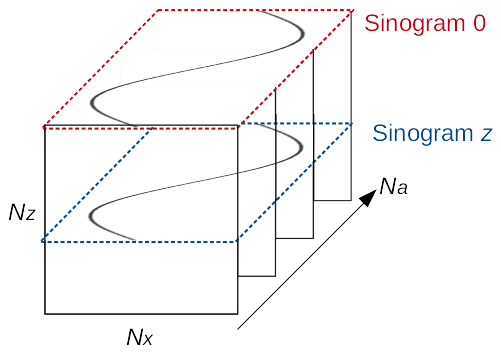
Radios chunks¶
In Nabu, the radios are processed by chunks. A chunk is a collection of radios subregion: this is a fixed subregion taken in all the Na radios.
In the simplest setting, the first chunk (chunk zero) is obtained by reading the first C lines of each radio, i.e lines [0, C[. The second chunk (chunk 1) is obtained by reading lines [C, 2C[ ; and so on.
Chunks are actually read with a slight overlap (see next figure).
Processing radios by chunks enables to process sinograms by batches, as a radios chunk of size C gives a stack of C sinograms (or slices) once the chunk is “transposed”.
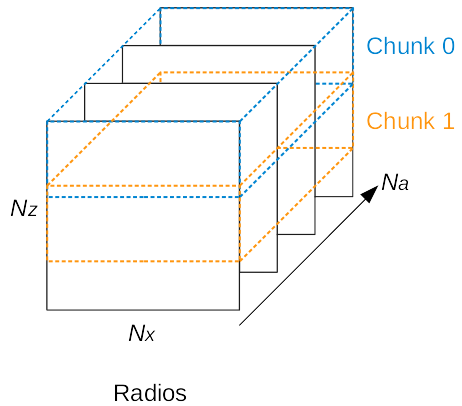
Processing done in the radios space¶
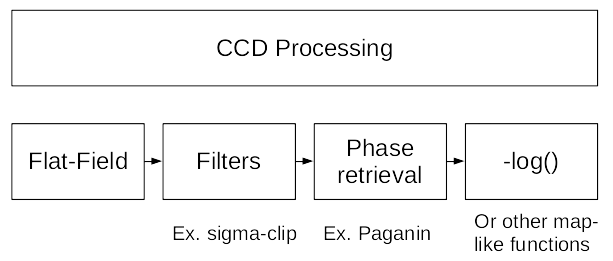
The process can also be started from any point. For example, we can start from phase-retrieved radios, by deactivating steps 1-2-3.
Processing done in the sinogram space¶
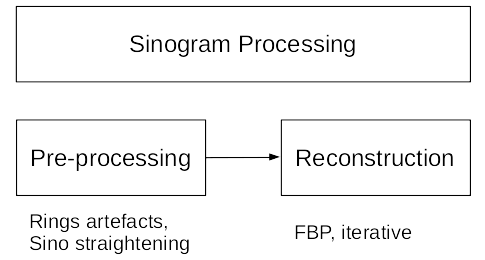
The input is usually a chunk of radios, and the data will be transposed to be accessed as a stack of sinograms.